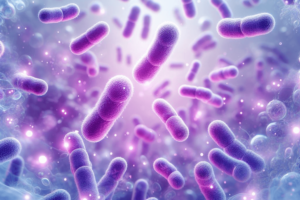Do you wish there was a magic which would stop you from aging? We totally want that. No one is willing to age and neither does anyone want wrinkles and fine lines on the skin.
Aging of skin can be divided into two broad processes: Chronological aging and Photo-aging.
Chronological aging
Chronological aging mainly represents the structural, functional, and metabolic changes that occur in the skin that are parallel to the aging and degenerative changes in other body organs.
Symptoms of chronological aging include:
Dry and thin skin- Usually young skin renews itself every three or four weeks, whereas older skin takes around four to six weeks to renew itself. The topmost layers lose more moisture due to the aging process, and older skin has a dryer and more dehydrated appearance. The good thing to know is that it is possible to slow the process of skin aging by adopting suitable measures.
Fine wrinkles– Fine wrinkles are the result of diminished production of collagen; it is initially observed around eyes (commonly known as ‘crow’s feet), forehead, and other sun-exposed areas. More pronounced effects include furrows at the site of facial expression lines and sagging folds over the eyelids, jaw, neck and arms.
Abnormal Blood vessels– Within the many small, delicate blood vessels supplying nutrients to the skin, abnormalities develop. This is particularly conspicuous over the nose and cheeks.
Age spots– These are pigmentations that surface as a result of a decrease in the function and number of pigment cells in sun-exposed areas. Preventing sun damage is important in long term skin care and may delay or slow down the process of skin aging.
Photo-aging
Photo-aging is characterized by a complex process of skin changes induced over time by ultraviolet light exposure. It is a process which involves damage to collagen and elastic fibers in the skin. Genetics also play a very significant role, the amount of wrinkles present is highly dependent on the amount of sun exposure. Photoaging is more prevalent among populations with fair skin tone.
How wrinkles develop
Skin is made up of multiple layers of cells that are undergoing self shedding and regeneration once every 30 days or so in repeated cycles. These skin layers are broadly divided into two sections- top epidermis and the underlying dermis.
A wrinkle is formed following a series of major cellular changes:
During the sub-clinical phase of aging i.e. from age 35-45, there is a gradual and a very progressive slowing of cellular turnover and regeneration. Eventually it leads to skin getting thinner. As a result, the normally undulating ridge-like dermal- epidermal interface (DEI) becomes flatter. This flatness reduces the surface area of nutritional exchange between the underlying dermis on the bottom and the epidermis on top.
Reduced nutrition to the epidermis from aging is one factor that causes cellular exhaustion and weakness. The removal of few unwanted byproducts of cellular metabolism such as free radicals is reduced. The accumulation of free radicals within the cell may lead to undesirable mutational damages in the cell sometimes leading to cancer.
Paradoxically, a matured aging skin contains more elastin, which the body uses to fill in the empty space left by the deficiency of collagen. Such elastin, unfortunately, is fragmented, calcified, and also contains excessive lipids.6
In addition to the loss of skin thickness due to lack of collagen support, the aging skin is more loose and lacks elasticity. These two properties are hallmarks of wrinkles. By age 50, very few persons can escape wrinkles. The difference only lies in the degree of the blemish.
A wrinkle, very simply, is caused by the reduction of collagen. Understanding the role of collagen helps to find ways to reverse aging skin.
Moisturizers for your skin
Moisturizers have long been a part of skin care routines. The Role of moisturizer is that of a barrier between skin and the cold, dry air. Moisturizers have been shown to increase the water content in the stratum corneum, the skin’s outermost layer, which helps to relieve dryness of skin. They are known to fight the signs of aging and help skin to look more healthier. Products such as lotions, creams, serums, and ointments are the primary method of adding moisture and treating dry skin. It is being suggested that one should look for a moisturizer that has:
- Hyaluronic acid
- Glycerin
- Ceramides
- SPF
- Non Comedogenic listed on the label
Other ingredients that can be considered in moisturizers include:
- Occlusives: These are mainly oily substances that can block the evaporation of water, such as lanolin, cetyl alcohol, mineral oil, paraffins and stearic acid.
- Vitamins: Vitamins play a major role in reduction of fine lines and wrinkles and also stimulate the production of collagen, such as Vitamin E and C.
- Humectants : Are substances that can pull water from the air into the outer layer of the skin, such as honey, panthenol and glycerin.
Natural Remedies to moisturize skin
- Oils
- Honey
- Aloe vera Gel
- Milk or buttermilk
- Avocado
- Cocoa butter
- Shea butter
- Cucumber juice
- Beeswax
- Mango butter
- Rosehip oil
Summary
Skin is the largest organ of the body. Young and healthy skin is filled with enough collagen and is well hydrated. It is not subjected to free radical attacks from the environment.
The scientific approach to youthful skin should involve the following three elements for maximum effectiveness:
- Anti-aging oral and topical factors that promote synthesis of collagen and GAGs through the use of secretagogues such as growth hormones and also reduce free radical damage through oral and topical antioxidants, herbs, and oils.
- Quality moisturizers can also help to soothe and repair itchy, dry, and irritated skin. They will help to maintain the skin’s moisture barrier and also protect the skin from environmental damages.
- By doing Life-style changes like drinking sufficient amounts of water, staying out of the sun and heat and also following a healthy dietary pattern..
Reference:
- https://skinkraft.com/blogs/articles/anti-aging
- https://www.drlamcoaching.com/blog/reverse-aging-skin/
- Fisher GJ, Kang S, Varani J, Bata-Csorgo Z, Wan Y, Datta S, Voorhees JJ. Mechanisms of photoaging and chronological skin aging. Archives of dermatology. 2002 Nov 1;138(11):1462-70.
- Han A, Chien AL, Kang S. Photoaging. Dermatologic clinics. 2014 Jul 1;32(3):291-9.
- Zhang S, Duan E. Fighting against skin aging: the way from bench to bedside. Cell transplantation. 2018 May;27(5):729-38.
- Letsiou S. Tracing skin aging process: a mini-review of in vitro approaches. Biogerontology. 2021 Jun;22(3):261-72.
- https://www.healthline.com/health/beauty-skin-care/how-to-moisturize-face
- Lodén M. Role of topical emollients and moisturizers in the treatment of dry skin barrier disorders. American journal of clinical dermatology. 2003 Nov;4(11):771-88.







